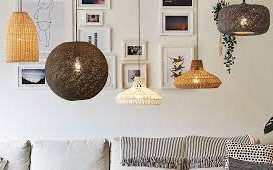Lighting is a vital element in interior design, capable of transforming the atmosphere and aesthetics of a space. When it comes to designer lights, two prominent styles have emerged as popular choices: modern and traditional. Each style brings its own unique characteristics and visual appeal, catering to different preferences and design sensibilities. In this article, explore both styles as it helps you to examine their key features and help you decide on your own space.
Modern Designer Lighting:
These types embrace sleek and contemporary designs, focusing on simplicity, clean lines, and functionality. These fixtures are known for their minimalist aesthetic and innovative use of materials. The following are some types in more detail.
Floor Lamps: Modern floor lamps add functional and decorative lighting to a space. These freestanding fixtures often feature sleek, minimalist designs with adjustable arms or heads for customizable angles. Floor lamps in modern design incorporate materials like metal, wood, or glass and can feature integrated LED lighting for energy efficiency.
Wall Sconces: Modern wall sconces provide functional and decorative lighting while adding a touch of sophistication to a room. These fixtures are mounted on walls and can be used to highlight artwork, provide ambient lighting, or act as reading lights. Modern wall sconces feature sleek designs, often using metal or glass materials, and may incorporate LED technology for energy efficiency.
Linear Suspension Lights: They are also called linear pendants or strip lights. They are sleek and elongated fixtures that provide a modern and linear aesthetic. These fixtures consist of a row of suspended LED light bars or strips, creating a visually striking and contemporary solution. They are commonly used over kitchen islands or dining tables.
Flush Mount and Semi-Flush Mount Lights: They are popular choices for modern overhead lighting. These fixtures are mounted to the ceiling directly, creating a streamlined, unobtrusive appearance. They feature clean and geometric designs, often with diffusers or shades made of glass or fabric, making the lights soft and even.
Traditional Designer Lighting:
These types encompass various fixtures, each contributing to the overall timeless elegance and opulence of this style. Inspired by historical periods like Victorian, Art Deco, and Renaissance, these types feature intricate details, ornate designs, and luxurious materials. Here are some of the critical types in more detail. designer lights
Chandeliers: Chandeliers are iconic fixtures that epitomize traditional elegance. These elegant pieces are often the focal point of a room, captivating attention with their cascading crystals, ornate metalwork, and multiple arms. Traditional chandeliers come in various sizes, from small and delicate pieces for intimate spaces to large and elaborate designs for grand entrances or dining rooms.
Table Lamps: Traditional table lamps are elegant additions to desks, bedside tables, or sideboards. These lamps typically feature decorative bases, such as sculpted metal or ornate ceramic designs. The shades often incorporate luxurious fabrics, like silk or brocade, to enhance the overall sophistication. Traditional table lamps provide both task and ambient lighting, adding a touch of classic charm to any space.
Candlestick Lights: They are reminiscent of the past when candles were the primary source. These traditional fixtures feature candle-like bulbs or holders to create a nostalgic and romantic ambiance. They can incorporate into chandeliers, wall sconces, or standalone candlestick-style lamps, evoking a sense of traditional charm and sophistication.
Pendant Lights: They suspend from the ceiling, creating a stunning focal point. These fixtures often feature decorative glass shades or ornate metalwork. They can be utilized individually or in groups to illuminate dining tables, kitchen islands, or entryways. They add a touch of glamour and refinement to any space they adorn.
In conclusion,
Modern and traditional styles offer distinct visual characteristics and functionality. Modern designer lights emphasize simplicity, minimalism, and practicality, while traditional ones evoke a timeless elegance with their ornate details and warm colors. By understanding the critical features of each style, you can make a decision and select those that best suit your style and the atmosphere you prefer to create in your space.

